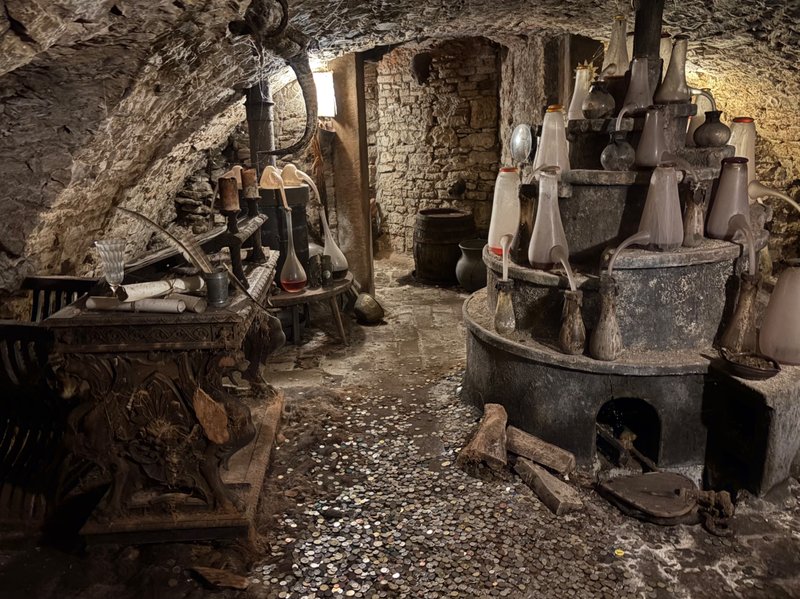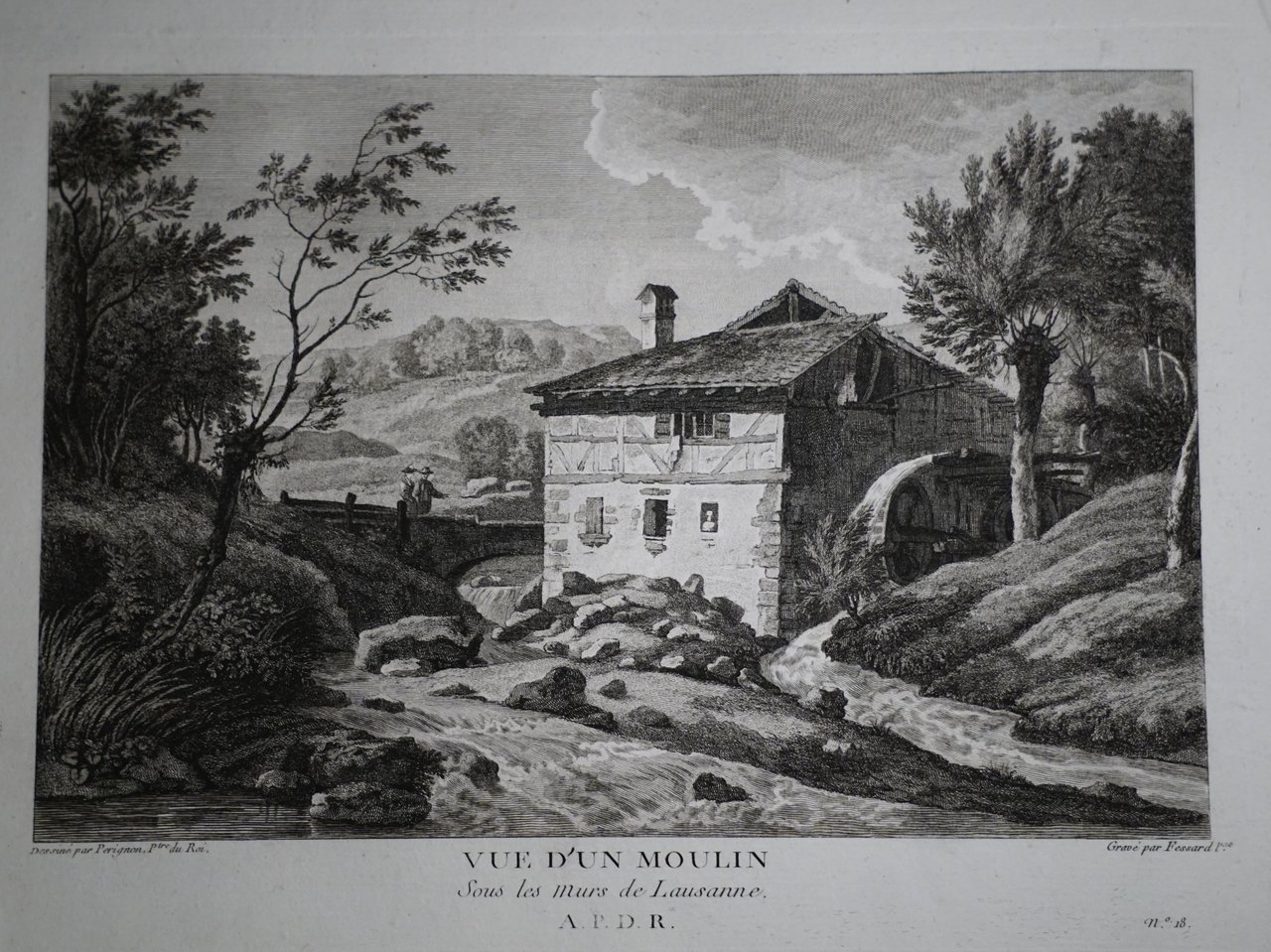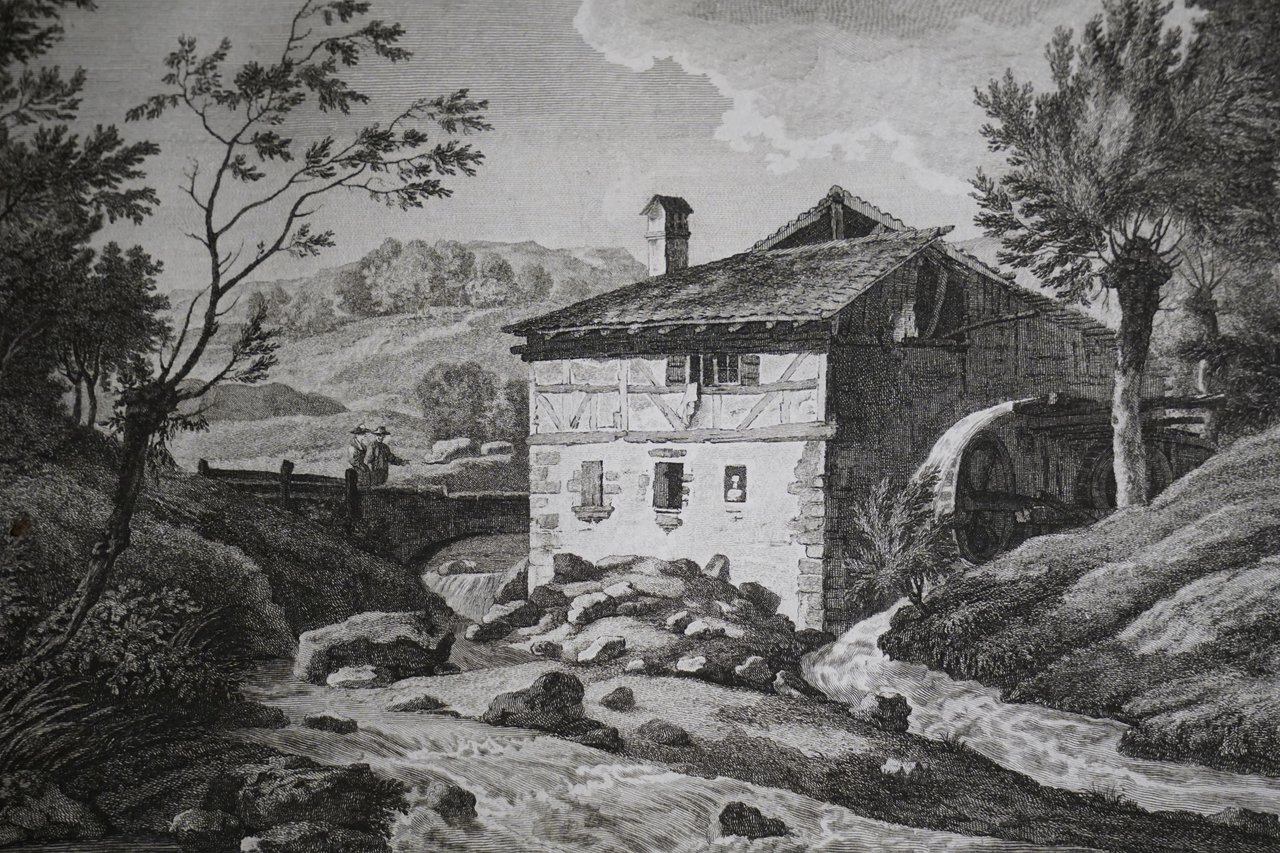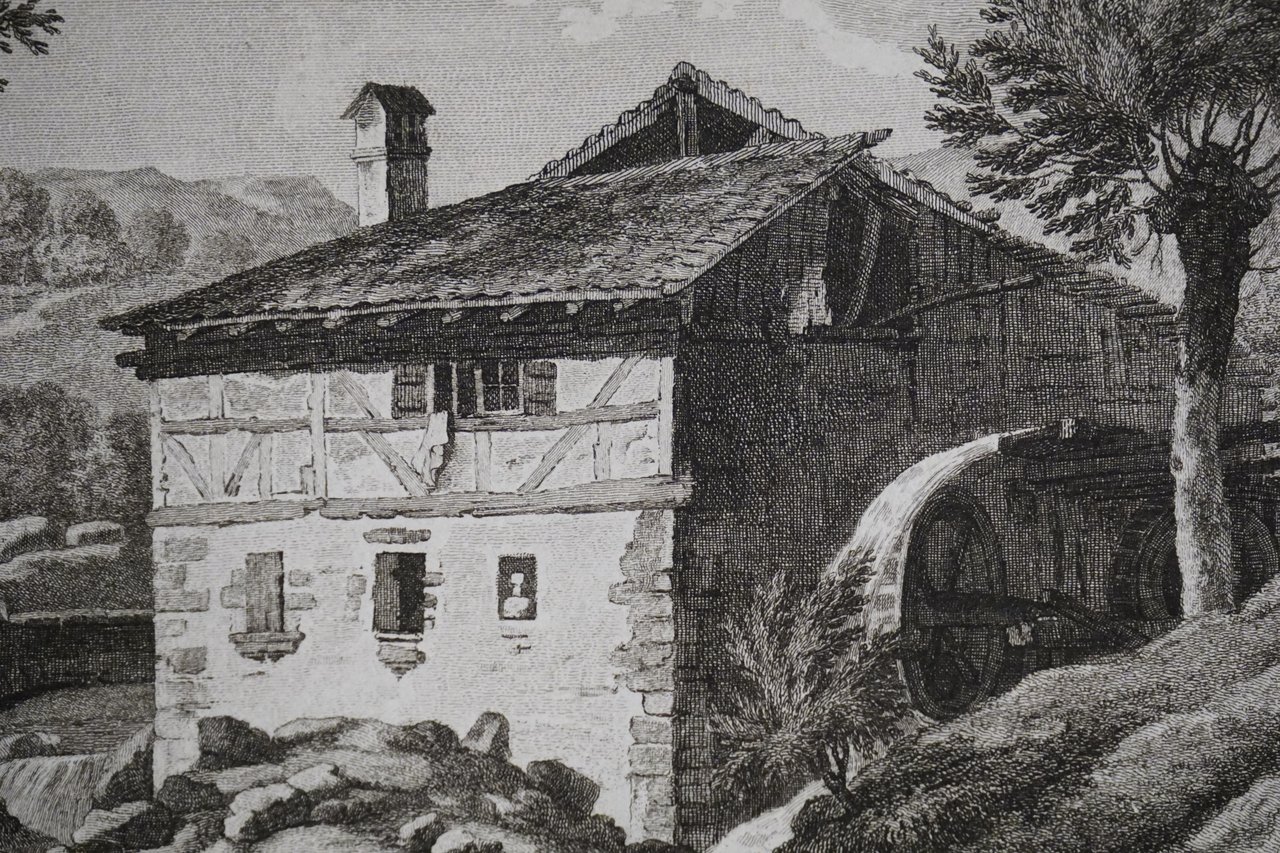The History of the Mills in Switzerland
12 comments
Good day dear Hive Community, first of all I would like to welcome you all to my new contribution and hope you had a day that was full of positive experiences! In this post, I would like to discuss an interesting historical topic and hope you can expand your knowledge.
Here you can see an original work of art from 1780 which was made with the copper engraving method and represents a water mill in the Swiss city of Lausanne which is located in the French-speaking canton of Vaud and under the mill you can see the French words Vue d'un Moulin sous les Murs de Lausanne which means as much as view of the water mill of Lausanne. If you are also interested in the technology and history of the copper engraving, which was developed by the goldsmiths at the time, you will find
a contribution where I went into the topic in more detail. The city was considered very innovative at the time and the area was very well known for its numerous mills and here there were especially water, saw and other types of mills which were of great use for commercial purposes and at that time a lot of leather was processed in Lausanne and it was known for its strong infrastructure and many railway networks were built at that time which were of great importance for the development and it is still particularly known today for the old mills. Once upon a time there were over 4000 mills in Switzerland according to estimates which were of great importance for the development of Switzerland and with the beginning of industrialization there were fewer and fewer and until the middle of the 20th century, the number has fallen drastically and there were only a few hundred and nowadays some have been renovated again and I think it is good that there are circles that stand behind it and have recognized the importance of promoting this culture. With the many rivers and valleys, the location was perfect and especially often there were mills in Switzerland that were operated with the help of hydropower and were of enormous importance for the shredding of various raw materials such as grain or stones and there are also numerous traces of old paper or sawmills and there were also fulling mills which were responsible for the processing of cloths or leather and also in Lausanne there were als some types of these mills.Switzerland was between the 1st and the 5th century also part of the Roman Empire and there the first traces of the water mills can already be found and since the beginning of the Middle Ages more and more mills have been built and and over the centuries followed more and more who threw themselves to the topic and in the late Middle Ages which started in the 13th century, there were almost everywhere mills in Switzerland which were of enormous importance for growth. While the windmills prevailed more and more in other countries, Switzerland was rather dismissive of the topic and to this day there are only traces of less than 5 old windmills in Switzerland because of the location and the numerous water connections, water mills were simply much more lucrative. At that time, many rulers knew how important mills are and it quickly became a popular object for investors who begun to acquire a lot of land which was interesting for construction and of course it also needed the right supply of water and also areas with rivers became a Important investment object and at that time many people knew how important mills were for human life and knew almost no crises. For centuries, Switzerland has also been known for mining and here, the mills were also of great importance to crush ore and the people usually selected a location in the mountains and, of course, you also had to think of different scenarios such as a possible water shortage when choosing the location, as it often happened in larger cities such as Geneva. It was always important to be able to access routes and it had to be taken into account that the crushed materials came quickly to their destination via transport routes and in order not to have to build additional paths, locations were choosen which already had a connection to the valley. Afterwards, it can definitely be said that the mills were of enormous importance for the development of Switzerland and already helped to enable a strong economy in the Middle Ages and in Switzerland many technologies were also developed which were important for improving efficiency and many artists have also dedicated themselves to this topic and therefore I am pleased to present you one of the many works that were produced by the French painter Alexis-Nicolas Pérignon (1726 - 1782), the printer Claude-Mathieu Fessard (1740 - 1893) and the Swiss historian Beat Fidel Zurlauben (1720 - 1799).
Thanks for stopping by and I hope you could learn something new about history! I captured these pictures with my Camera Sony Alpha 6000 plus 55-210 mm lens!








Comments